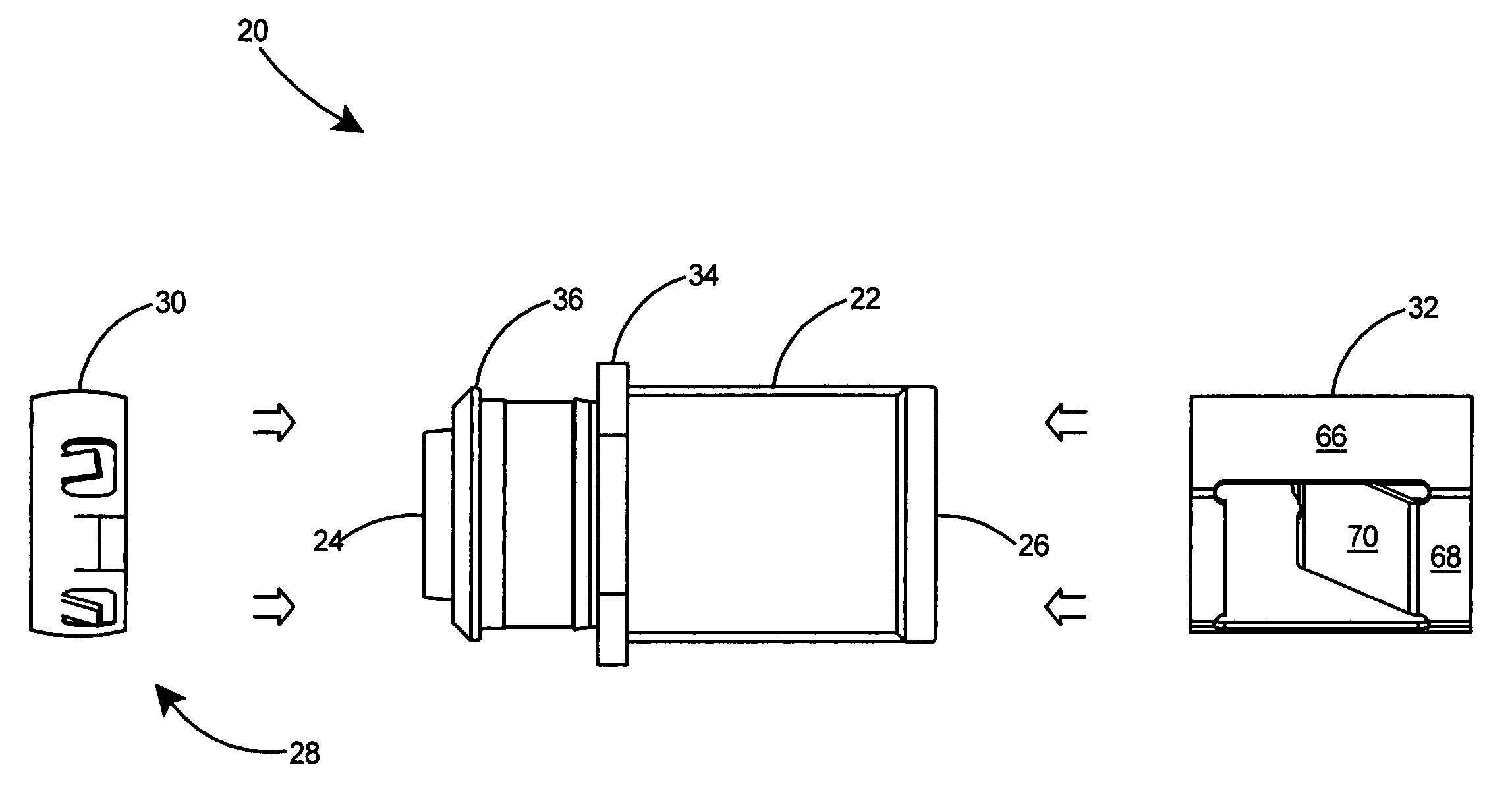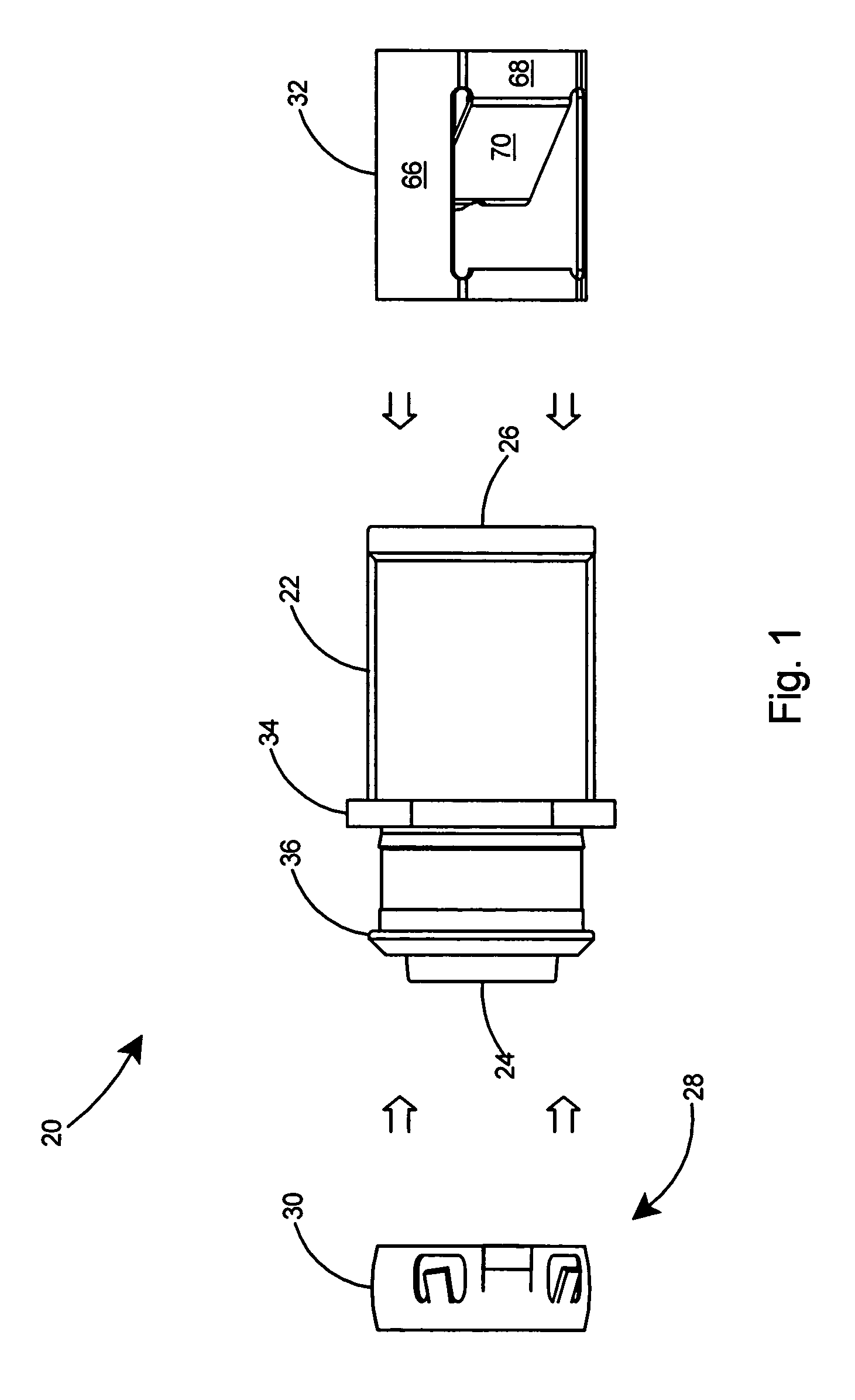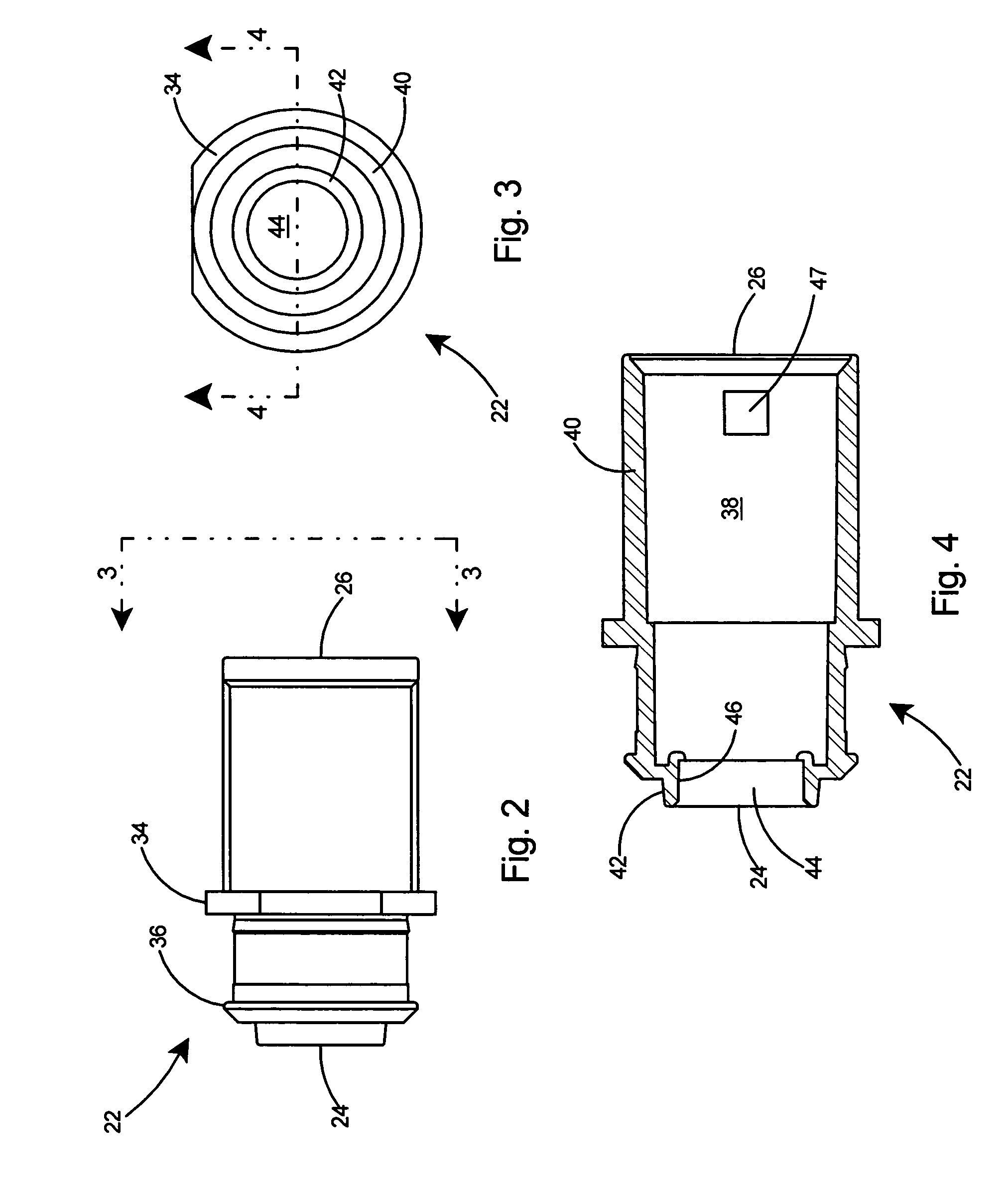Electrical fitting with internal cable retainer
a technology of internal cable retainer and electrical fitting, which is applied in the direction of electrical equipment, substation/switching arrangement details, coupling device connections, etc., can solve the problems of mechanical complexity and relatively high production cost of electrical fitting, and achieve the effect of convenient cable or conduit insertion
- Summary
- Abstract
- Description
- Claims
- Application Information
AI Technical Summary
Benefits of technology
Problems solved by technology
Method used
Image
Examples
first embodiment
[0058]Referring to FIGS. 5-7, the cylindrical panel-engaging ring 30 of the first embodiment is formed from a blank 48 as shown in FIG. 5 into a substantially cylindrical shape as shown in FIGS. 6 and 7. The panel-engaging ring 30 includes panel engagement tangs 50 and grounding tangs 52 bent outwards of the ring.
[0059]The main advantages of the present invention are realized from the arrangement of the cable retainer 32 as shown in FIGS. 8-14. As shown in FIG. 8, the cable retainer 32 is formed from a flat blank 54 of spring steel having two ends 56 and 58. The blank 54 includes bend lines 60 laterally across the blank 54 and separate bend lines 62, 63, and 64 longitudinally along the blank. The blank 54 of FIG. 8 will be formed into a substantially tubular body 66 as shown in FIGS. 9 and 10 but with a flat portion 68 formed between bend lines 60. A cable retaining tang 70 is formed by bending inward of the tubular body 66 at bend line 62 and a locking tang 72 formed by bending out...
second embodiment
[0071]Several advantages of the present invention are realized from the arrangement of the cable retainer 204 as shown in FIGS. 26-32. The second and preferred embodiment of the cable retainer 204 is formed from a flat blank 212 (see FIG. 26) of spring steel having two ends 56 and 58. The blank 212 includes bend lines 60 laterally across the blank 212, bend lines 62 and 63 longitudinally along the blank 212, and bend line 214 at an angle θ2 that is preferably between 10 and 20 degrees with respect to the edge 216 of the blank and most preferably at an angle of 15 degrees with respect to the edge 216 of the blank. The blank 212 of FIG. 26 will be formed into a substantially tubular body 222 as shown in FIGS. 27 and 28 but with a chord or flat portion 68 formed between bend lines 60. The cable retaining tang 208 is formed by bending inward of the tubular body 222 at bend line 62 and a locking tang 72 formed by bending outward of the tubular body 222 at bend line 63. The cable retainin...
PUM
 Login to View More
Login to View More Abstract
Description
Claims
Application Information
 Login to View More
Login to View More - R&D
- Intellectual Property
- Life Sciences
- Materials
- Tech Scout
- Unparalleled Data Quality
- Higher Quality Content
- 60% Fewer Hallucinations
Browse by: Latest US Patents, China's latest patents, Technical Efficacy Thesaurus, Application Domain, Technology Topic, Popular Technical Reports.
© 2025 PatSnap. All rights reserved.Legal|Privacy policy|Modern Slavery Act Transparency Statement|Sitemap|About US| Contact US: help@patsnap.com



